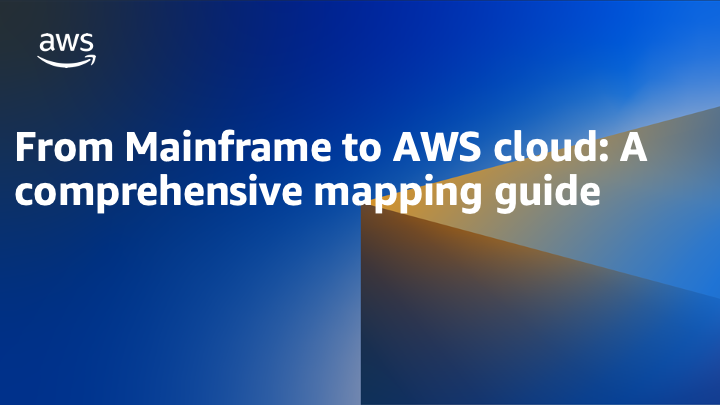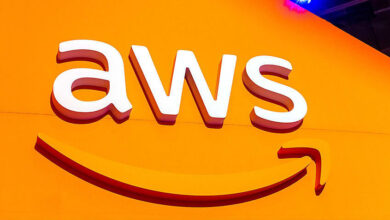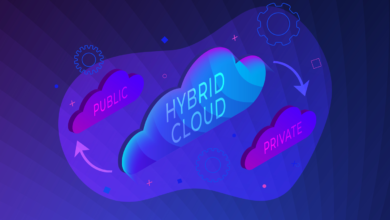From Mainframe to AWS cloud: A comprehensive mapping guide

Mainframe systems are being utilized by companies worldwide since the 1950s to operate their core business applications and operations. In the digital transformation era, businesses are increasingly transferring mainframe data and migrating their workloads into AWS. Moreover, the recent COVID-19 pandemic has significantly impacted the modernization of mainframe systems due to remote access issues, scalability challenges, and unpredictable demand patterns. The pandemic has resulted in a surge in traffic and an increased demand for new functionalities, necessitating core application and infrastructure scaling and transformation. According to GlobeNewsWire*, the mainframe modernization market is expected to grow at a compound annual growth rate of 16.8% from 2022 to 2031.
This blog series will discuss the mainframe’s primary components and AWS’s related services and capabilities that can substitute those components. We will also state the advantages of migrating mainframe workloads to AWS. In part one, we will focus on the core components such as compute and storage. In subsequent posts, we will delve into other major components such as databases, security, auditing, reporting, and other services.
Compute
Mainframe has been a reliable platform for several enterprises to run their businesses for decades. It remains a prized asset for IT and business departments, offering exceptional high availability, reliability, and security to support hundreds of legacy applications and process thousands to millions of transactions.
The mainframe compute environment serves as the execution platform for applications supporting both batch and online transaction systems. Batch processing is performed through a set of instructions written in Job Control Language (JCL) and utilizes the Job Entry Subsystem (JES) to manage batch workloads. Online transactions are driven by end-user interaction through Graphical User Interface (GUI) or 3270 terminal and are also accessible via Application Programming Interfaces (APIs). Numerous customers have already integrated their mainframe systems with web GUIs in distributed environments and are also utilizing mobile devices to access mainframe transactions. This integration generates additional demand for online transactions, leading to heightened usage of Millions of Instructions Per Second (MIPS) and increased costs.
AWS cloud offers wide range of computing options, such as virtual machines, containers, serverless architecture, and high-performance computing. These options cater wide range of workloads and enable customers to achieve high availability, reliability, scalability, elasticity, security, cost optimization, and automation. With these capabilities, AWS effectively meets the demanding non-functional requirements of mainframe workloads, empowering businesses to run their operations seamlessly. AWS offers a pay-as-you-go approach where you only pay for the specific services you use, without requiring long-term contracts or complex licensing. Furthermore, AWS provides customers with various tools and services to help build sustainable solutions such as real-time monitoring of carbon footprint, energy-efficient services such as the AWS Graviton2 processor, the use of 100% renewable energy for AWS infrastructure, and tools to analyze and manage sustainability data. With these tools, customers can make informed decisions to reduce their environmental impact, conserve energy, and promote sustainability.
AWS Mainframe Modernization service offers a comprehensive approach to modernize mainframe applications. It provides tools for assessing existing mainframe workloads, identifying candidates for modernization, and creating migration plan. Additionally, it assists customers in replatforming (using Micro Focus) or refactoring (using AWS Blu Age) their mainframe applications into cloud-native architectures with extensive automation.
You can run your applications on Amazon Elastic Compute Cloud (Amazon EC2), a secure and scalable compute service within AWS or you can choose containerized deployments orchestrated through Amazon Elastic Container Service (Amazon ECS), Amazon Elastic Kubernetes Service (Amazon EKS), Red Hat OpenShift Service on AWS (ROSA). Alternately you can leverage partner tools such as TmaxSoft OpenFrame or NTT DATA UniKix, depending on your preferred architecture. If the preference is to use a serverless compute service then you can opt for AWS Fargate, a serverless compute engine for containers, where you can run Docker containers without having to manage the underlying infrastructure or AWS Lambda, a serverless, event-driven compute service that allows you to run code for various types of applications or backend services without the need for provisioning servers or clusters.
AWS provides several alternatives to mainframe job schedulers. If you are rewriting your applications, consider AWS Step Functions, Amazon EventBridge, Amazon Managed Workflows for Apache Airflow (Amazon MWAA), and various partner tools such as Stonebranch Workload Automation and BMC Control-M. Step Functions can help rewriting complex batch processes written in JCL to serverless workloads by orchestrating sequential workflows and integrating directly with various AWS services such as ECS, Lambda and more. EventBridge is a serverless event bus that enables developers to define event rules triggering actions like invoking Lambda functions and sending notifications, replacing traditional mainframe-based event processing systems to process large volumes of events in real-time. Amazon MWAA enables users to create and monitor data pipelines with complex workflows scheduled at specific intervals or triggered by events, replacing similar data processing tasks on the mainframe.
The diagram below shows a mapping of mainframe online and batch functions from an infrastructure point of view to AWS services below:
Storage, Archiving
The mainframe stores transactional and historical data on Direct Access Storage Device (DASD), Virtual Tape Library (VTL), or physical tapes. These storage devices can be costly, challenging to scale, and require high maintenance. Additionally, mainframes traditionally isolate the data stored in them from the rest of the organization due to differences in data formats and types. As a result, it can be challenging to utilize this data across the enterprise, including for big data, analytics, and artificial intelligence, hindering the ability to derive insights. However, with recent modernization initiatives, organizations are seeking ways to break down data silos, become data-driven, and gain a competitive advantage.
Mainframe data stored in files and datasets, can be migrated to several AWS storage services, including Amazon Simple Storage Service (Amazon S3), Amazon Elastic File System (Amazon EFS) , Amazon FSx and Amazon Elastic Block Store (Amazon EBS). These storage services are all highly scalable, secure, elastic, durable, performant, and offer advanced security features to protect your data, such as encryption, access controls, and compliance certifications.
Amazon S3 is an object storage service which provides flexible storage classes for specific use cases and access patterns. Amazon EFS is a fully managed Linux-based file storage service that integrates seamlessly with multiple AWS services and on-premise environment. Amazon FSx is a fully managed Windows and Lustre-based file storage service that includes data deduplication to reduce storage costs. Amazon EBS, is an easy-to-use, scalable, high-performance block-storage service designed for Amazon EC2.
For data stored on tape, you can use Amazon Simple Storage Service Glacier (Amazon S3 Glacier). S3 Glacier is a secure, durable, and cost-effective storage solution for long-term data archiving and backup. It is specifically designed to help organizations manage large amounts of data for purposes such as disaster recovery and regulatory compliance.
AWS storage services offer advanced security features to protect your data, such as encryption, access controls, and compliance certifications. It seamlessly integrates with other AWS services, making it easier to manage and analyze your data within the AWS ecosystem.
For migrating mainframe files or datasets to AWS, AWS offers the AWS Transfer Family, which is a set of fully managed file transfer services that support SFTP (Secure File Transfer Protocol), FTPS (File Transfer Protocol over SSL), and FTP (File Transfer Protocol). This enables organizations to move files to and from AWS. Additionally, the AWS Snow Family is a set of physical devices that help customers transfer large amounts of data into and out of AWS. These services can aid in migrating mainframe data to AWS storage services.
Additionally, AWS partners such as Model9, IBM and Luminex also offer unique solutions to migrate data from the mainframe into AWS seamlessly. After migrating the data to AWS, customers can use a wide variety of AWS analytics services to analyze and visualize data, and gain valuable business insights. In addition, there are thousands of partner solutions available to gain more insights from the core data.

Conclusion
AWS offers a wide range of compute services that can run your mainframe workloads in the cloud, along with storage and archiving services that can host decades worth of data from various file formats on z/OS. This opens up data access to new cloud-native applications or legacy applications migrated to AWS. By modernizing your mainframe workloads and data on AWS, you can meet or exceed demanding non-functional requirements for the mainframe workloads.
In our next post, we’ll compare and discuss various database options on z/OS and AWS, its features and functionalities.
Further reading



